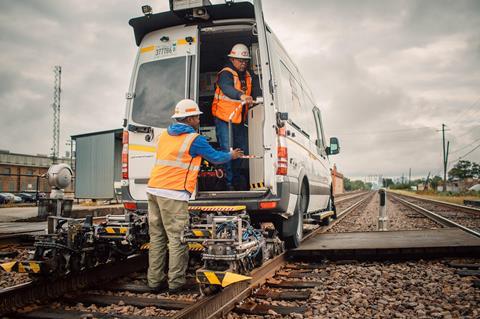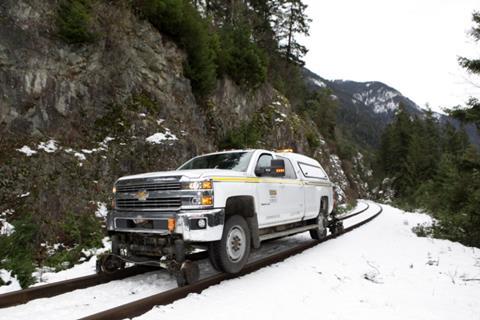
USA: The Federal Railroad Administration has introduced an updated rule on the use of ultrasonic rail inspection technology with GPS location data, enabling railroads to undertake continuous testing of rails more efficiently.
Due to come into force 30 days after its submission to the Federal Register on August 28, the regulatory reform regularises existing practice; FRA has been issuing waivers for the past 10 years to enable railroads to develop and utilise ultrasonic inspection technology. It says the updated standards are ‘consistent with the state of the practice’.
According to FRA, the Final Rule on Rail Integrity Amendments & Track Safety Standards ‘focuses more on providing performance-based outcomes, rather than prescribing exactly how companies conduct effective tests’. Railroads will be expected to use established methods to conduct the required rail inspections, but will also have the flexibility to introduce new technologies and methods ‘as they are proven safe and effective’.
FRA anticipates that this will make it easier for railroads to test rails more frequently and thus identify internal flaws before their condition can impact on safety. It notes that between May 2019 and May 2020, there was a 27% reduction in train accidents caused by broken rails, which it says was largely attributable to the use of new inspection technology.
Under current practice, detailed imaging and location data collected by the ultrasonic test cars is transmitted to offline locations for analysis to identify suspected internal rail defects. Depending on the severity of the potential defect, the operators then have between 36 h and 84 h to undertake a manual inspection of the rail. If a suspected defect is verified, FRA regulations require the railroad to ‘immediately apply the proper remedial action’, which could range from imposing a temporary speed restriction to stopping all trains until the rail can be replaced.

However, the previous regulation required ultrasonic test teams to stop and inspect visually any detected potential defect within 4 h. This frequent starting and stopping reduced the length of track that could be inspected and could also delay other freight and passenger trains using the line. According to FRA, it typically limited the length of track inspected to around 30 km per day, against 125 to 250 km for continuous testing.
FRA estimates that a general switch to continuous testing would allow one vehicle to do the work of between three and five, reducing the number of specialist crews needed as well as the impact on other trains. This could save the industry around $120m over 10 years. More frequent data collection would also ‘produce new data troves, facilitating more detailed research into how track defects develop and propagate over time and how those issues can be addressed before adversely affecting rail safety’.
Federal Railroad Administrator Ronald Batory explained that ‘these modernised standards will allow railroads to implement innovative inspection methods without the burden of applying for individual waivers’.
















